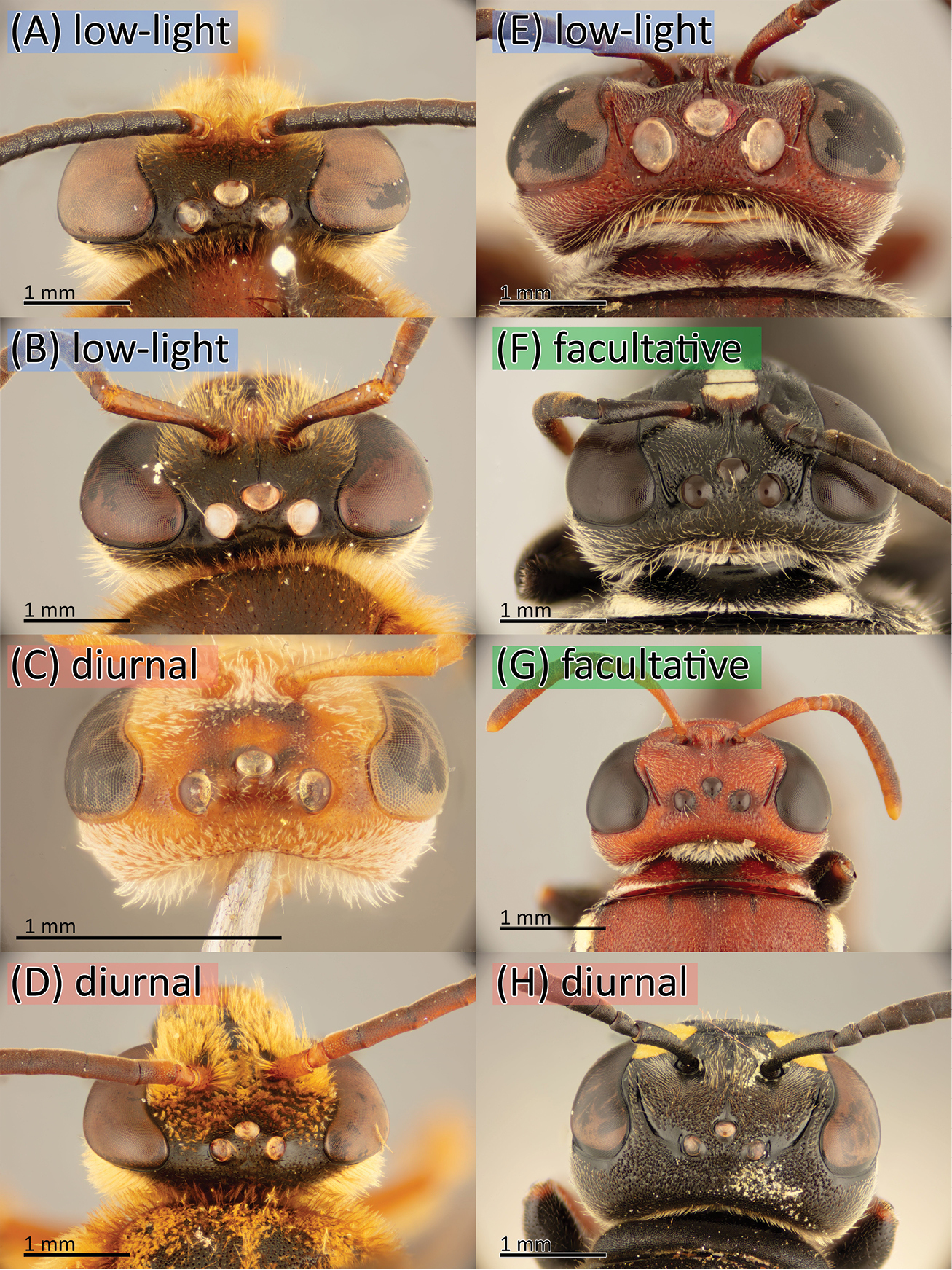
|
||
|
Dorsal head of some included species and related species for comparison of ocelli size A male and B female Reepenia bituberculata (Halictidae: Nomiinae) collected in low-light conditions C Lasioglossum (Chilalictus) ochroma (Halictidae: Halictinae), a species that has been hypothesised to be adapted to low-light conditions due to loss of pigment D Mellitidia tomentifera (Halictidae: Nomiinae), a bee in the same subfamily as Reepenia without enlarged ocelli E Meroglossa gemmata (Colletidae: Hylaeinae) F M. impressifrons penetrata (Colletidae: Hylaeinae) G M. eucalypti (Colletidae: Hylaeinae) H Hylaeus (Analastoroides) foveatus (Colletidae: Hylaeinae) a bee in the same subfamily as Meroglossa that lacks enlarged ocelli. Meroglossa gemmata has enlarged ocelli, consistent with adaptation to low-light conditions, comparable in relative size to R. bituberculata. The other two Meroglossa spp. (M. impressifrons penetrata and M. eucalypti) do not show such extreme morphological features compared to other members of the genus examined by Houston (1975), but are facultative low-light adapted. When compared to representatives from their respective subfamilies both Meroglossa (Hylaeinae) and Reepenia (Nomiinae) have relatively enlarged ocelli. Colours refer to those for each behavioural state in Fig. 4. |